
- The Historical Origins of the Black Madonna: Uncovering the Myths and Legends
- Symbolism and Significance: Understanding the Meaning of the Black Madonna
- The Role of the Black Madonna in Modern Spirituality and Faith Practices
- Cultural Impact: The Black Madonna Across Different Societies and Traditions
- Art and Iconography: Exploring the Depictions of the Black Madonna Through the Ages
- Pilgrimages and Celebrations: Discovering Sites Dedicated to the Black Madonna
The Black Madonna, a revered figure in various cultures, symbolizes the intersection of faith, identity, and history. Her imagery often evokes deep emotional responses, representing not only a spiritual guide but also a reflection of the struggles and triumphs of marginalized communities.
In this exploration, we delve into The Black Madonna: Exploring the Patron Saint's Significance and Meaning, uncovering the layers of symbolism and reverence that surround her. From her origins in medieval Europe to her modern-day significance, the Black Madonna serves as a powerful emblem of hope and resilience for many.
The Historical Origins of the Black Madonna: Uncovering the Myths and Legends
The historical origins of the Black Madonna are shrouded in a tapestry of myths and legends that span across cultures and centuries. Many scholars believe that her imagery may have roots in ancient pagan traditions where dark-skinned goddesses were worshipped, such as the Egyptian deity Isis. This connection to ancient spirituality highlights the syncretism that has shaped her identity over time.
Throughout Europe, the Black Madonna is often depicted in ways that reflect local lore and cultural narratives. For instance, in France, the famous Notre-Dame de la Noir is celebrated in the town of Chartres, where legends speak of miraculous healings and divine interventions. These stories contribute to the rich tapestry of her significance, making her a focal point of both religious devotion and local mythology.
Some common myths associated with the Black Madonna include:
- Legends of Origin: Tales suggest she was created by a divine artisan or emerged from the earth itself.
- Miraculous Powers: Many devotees recount experiences of miracles and healing attributed to her intercession.
- Cultural Syncretism: Her image often combines elements from various religious traditions, reflecting the blending of beliefs.
Despite the varied interpretations, the Black Madonna resonates as a symbol of resilience and cultural identity. Her presence in art and worship continues to inspire generations, reminding us of the interconnectedness of faith and heritage across different societies. As we explore her myths and legends, we uncover not just a religious figure, but a powerful testament to the enduring human spirit.
Symbolism and Significance: Understanding the Meaning of the Black Madonna
The Black Madonna embodies a rich tapestry of symbolism that resonates deeply within diverse cultures. Often depicted with dark skin, she serves as a powerful representation of the divine feminine, challenging traditional notions of beauty and piety. Her presence invites reflection on issues of race, identity, and the historical struggles of marginalized communities, making her a significant figure in discussions of social justice and inclusivity.
Central to the understanding of the Black Madonna's significance is the concept of cultural resilience. She embodies the strength of communities that have faced adversity, often depicted in art and worship as a source of empowerment for those who seek solace and inspiration. Her image serves not only as a spiritual figure but also as a reminder of the enduring spirit of those who have been historically oppressed.
The Black Madonna also symbolizes the intersectionality of various beliefs and traditions, reflecting a syncretic nature that bridges different faiths. This can be seen in various regions where she is venerated, each adding local elements to her representation. For instance, in some cultures, the Black Madonna is associated with agricultural fertility, while in others, she is viewed as a protector of the marginalized.
In summary, the Black Madonna's symbolism encompasses a wide array of meanings, including:
- Empowerment: A beacon of hope for marginalized groups.
- Cultural Identity: A reflection of the intertwining of various traditions.
- Spirituality: A spiritual guide that transcends traditional representations of divinity.
Thus, her significance extends far beyond mere iconography, positioning her as a crucial figure in the exploration of faith, identity, and the ongoing quest for justice and understanding across cultures.
The Role of the Black Madonna in Modern Spirituality and Faith Practices
The Black Madonna continues to play a significant role in modern spirituality, serving as a beacon of hope for many seeking connection to their faith. In contemporary practices, she is often invoked in rituals and prayers that emphasize empowerment, healing, and resilience. Her image resonates deeply with those who identify with themes of struggle and triumph, making her a vital figure in personal and communal spiritual journeys.
In various faith practices, the Black Madonna is celebrated through:
- Ritual Offerings: Devotees often present flowers, candles, and personal items as tokens of devotion.
- Healing Ceremonies: Many communities conduct healing rituals invoking her intercession, believing in her miraculous powers.
- Artistic Expressions: The Black Madonna inspires art, music, and literature, reflecting her enduring influence on cultural identity.
Furthermore, the Black Madonna's significance is evident in the growing movement of spiritual feminism, where she is embraced as a symbol of the divine feminine. This perspective challenges patriarchal interpretations of spirituality, inviting women to reclaim their spiritual heritage and celebrate their unique experiences. Through her, many find a sense of belonging and empowerment in their faith practices.
Ultimately, the Black Madonna stands as a testament to the evolving nature of spirituality in contemporary society. Her image fosters a sense of community, solidarity, and shared purpose among diverse groups, embodying the intersectionality of faith and identity in the modern world. As individuals continue to explore their spiritual paths, the Black Madonna remains a guiding figure of hope and resilience.
Cultural Impact: The Black Madonna Across Different Societies and Traditions
The cultural impact of the Black Madonna transcends borders and resonates through various societies, each interpreting her significance uniquely. In Latin America, for instance, she is often intertwined with Indigenous beliefs, where her image represents a fusion of colonial Catholicism and pre-Columbian spirituality. This syncretism highlights how the Black Madonna serves as a cultural bridge, embodying both the struggles against oppression and the celebration of resilience.
In Eastern Europe, the Black Madonna has become a national symbol for countries like Poland, where she is venerated as a protector of the nation. The Black Madonna of Czestochowa is particularly revered, believed to have miraculous powers that unite communities in times of crisis. Her image is a source of national pride and cultural identity, representing the history and struggles of the Polish people throughout the centuries.
Across Africa, the Black Madonna is often embraced as a symbol of empowerment in the context of post-colonial identity. Many see her as a representation of the divine feminine that transcends racial and cultural boundaries. She inspires movements focused on social justice and equality, as her image calls for acknowledgment of historical injustices while promoting hope and healing within communities.
In summary, the Black Madonna's influence can be seen through:
- Syncretic Practices: Blending of various religious traditions enhances her cultural relevance.
- National Identity: Serving as a symbol of strength and unity in times of adversity.
- Empowerment Movements: Inspiring social justice initiatives and cultural reclamation.
Her presence across different cultures not only signifies a spiritual icon but also serves as a reminder of the shared human experience of struggle, resilience, and hope, making her an enduring figure in global cultural narratives.
Art and Iconography: Exploring the Depictions of the Black Madonna Through the Ages
The depictions of the Black Madonna throughout history reveal a fascinating evolution in art and iconography, reflecting the cultural and spiritual contexts of different eras. Artists have often portrayed her with dark skin, emphasizing her connection to the divine feminine and challenging conventional representations of motherhood and sanctity. These artistic interpretations serve not only as religious icons but also as cultural symbols that resonate with issues of race and identity.
In medieval Europe, the Black Madonna was frequently depicted in a Byzantine style, characterized by rich colors and gold backgrounds. This style highlighted her divine nature and her role as a protector. Over time, however, regional variations emerged, incorporating local artistic styles and elements. For instance, the Black Madonna of Czestochowa features a distinct combination of Polish artistic traditions and spiritual symbolism, making her a pivotal figure in Polish national identity.
Moreover, the iconography associated with the Black Madonna often includes symbolic elements such as crowns, scepters, and flowers, each representing different aspects of her significance. These elements might include:
- Crowns: Symbolizing royalty and divine authority.
- Flowers: Representing purity and the blooming of faith.
- Scepters: Indicating her role as a protector and guide for her followers.
As we explore the artistic representations of the Black Madonna, it becomes clear that her image has continuously adapted to reflect the changing sociopolitical landscapes. From medieval churches to contemporary art, the Black Madonna stands as a powerful emblem of resilience and cultural identity, inviting ongoing dialogue about faith, heritage, and the complexities of representation in art.
Pilgrimages and Celebrations: Discovering Sites Dedicated to the Black Madonna
Pilgrimages dedicated to the Black Madonna are significant spiritual journeys that draw thousands of devotees each year. These events not only celebrate her divine presence but also foster a sense of community among participants. Locations such as Montserrat in Spain and the Sanctuary of Our Lady of Czestochowa in Poland are revered destinations where pilgrims seek healing and inspiration, underscoring the Black Madonna's role as a spiritual guide. Each pilgrimage is marked by rituals, prayers, and shared experiences that deepen the connection to her legacy.
In addition to pilgrimages, various celebrations throughout the year honor the Black Madonna, blending religious observances with local traditions. These festivities often include:
- Processions: Colorful parades where communities come together to honor her image.
- Masses and Services: Religious ceremonies that feature prayers and hymns dedicated to her.
- Cultural Events: Art exhibitions, music performances, and storytelling that celebrate her significance in different cultures.
The impact of these celebrations extends beyond spirituality, serving as a means of cultural expression and identity reinforcement. In places such as Italy and France, local customs and traditions are woven into the fabric of the festivities, showcasing the Black Madonna's adaptability and enduring relevance. Through these events, participants not only pay homage to her but also affirm their cultural heritage and collective resilience.
As we explore the locations where the Black Madonna is venerated, it becomes clear that each site carries its own unique stories and meanings. Some notable sites include:
| Site | Location | Significance |
|---|---|---|
| Montserrat | Spain | Home to the famous statue of the Black Madonna, attracting pilgrims for centuries. |
| Czestochowa | Poland | A national symbol of Polish identity and a site of miraculous occurrences. |
| Chartres | France | Known for its historical connection and miraculous healings associated with the Black Madonna. |
These sites of pilgrimage and celebration not only reflect the deep reverence for the Black Madonna but also highlight her role in the ongoing narratives of faith, resilience, and cultural identity across the globe.
 What is Montserrat Monastery: A Tranquil Retreat in Barcelona
What is Montserrat Monastery: A Tranquil Retreat in Barcelona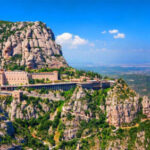 Discover the Magic: What Makes Mount Montserrat So Special?
Discover the Magic: What Makes Mount Montserrat So Special?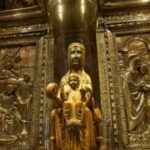 What is St. Montserrat the Patron Saint of? Exploring the Spiritual Significance of Montserrat
What is St. Montserrat the Patron Saint of? Exploring the Spiritual Significance of Montserrat The Mystical Powers of the Black Madonna: Exploring Miracles and Legends
The Mystical Powers of the Black Madonna: Exploring Miracles and Legends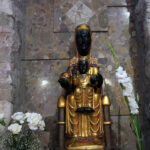 Why Did the Black Madonna Change Her Name? Uncovering the Mysterious Transformation
Why Did the Black Madonna Change Her Name? Uncovering the Mysterious Transformation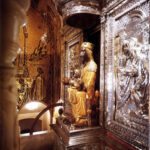 Unveiling the Enigma: Discovering the Whereabouts of the Black Madonna in Spain
Unveiling the Enigma: Discovering the Whereabouts of the Black Madonna in SpainIf you want to know other articles similar to The Black Madonna: Exploring the Patron Saint's Significance and Meaning you can visit the category WHERE YOU CAN GO.
Deja una respuesta

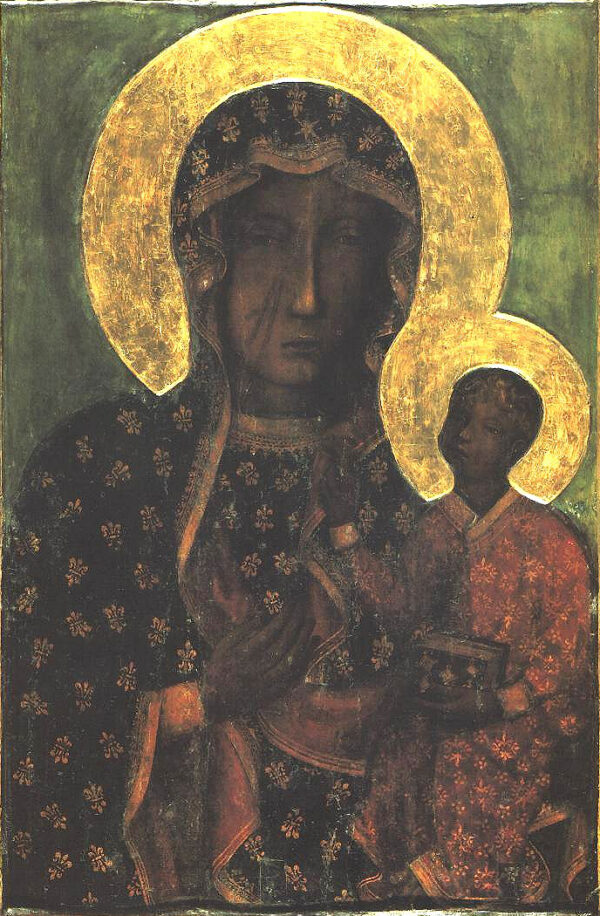








Read more!